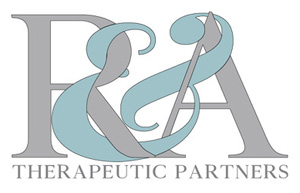College Marijuana Use Reaches Historic Levels
A study that has tracked substance use among college students since 1980, that is funded by the National institute on Drug Abuse (NIDA), has found that college marijuana use has reached historic levels. The trend has continued to increase over the past several years, with more young people using marijuana in 2020 than in previous decades.
Monitoring the Future
The study, Monitoring the Future (MTF), has been tracking the use of substances including marijuana, tobacco, and opioids, by adults between the ages of 19 and 22. The study includes those in college and those who are of college age but not enrolled in school. The study is funded by NIDA, which is part of the National Institutes of Health (NIH), and is conducted by scientists at the University of Michigan’s Institute for Social Research in Ann Arbor. The 2020 survey was conducted online between March 20 and November 30, 2020.
Historically High Levels
The study found that the use of marijuana has continued to rise among college students and college-age adults over the past five years. Among those non-college adults in the surveyed age group, the levels of marijuana use were at historically high levels in 2020. The use of marijuana, according to the study, is at its highest level since marijuana use was first recorded in the 1980s.
Among the young adults in college, 44% reported using marijuana in the past year. That number was 38% in 2015. For those adults in the same age group who were not in college, annual marijuana use was 43%. The study also found that 35% of high school seniors reported in 2020 that they had used marijuana in the past year.
The use of marijuana on a daily or near daily basis has also continued to rise since 2015, with 8% of the college students surveyed saying that they used marijuana daily or almost daily in 2020. In 2015, 5% of college students said they used the drug daily or almost daily. Of the young adults not in college, 13% said they used marijuana daily or on a near daily basis.
Regional Findings
The MTF study found some regional differences in the use of marijuana and other drugs among college students and college-age adults. The annual prevalence of marijuana use was higher in the northeastern part of the country than in the south. Study results revealed estimates of 47% in the Northeast, 46% in the West, 42% in the Midwest, and 36% in the South. Prevalence of the use of illegal drugs, which is driven in large part by marijuana use, was 50% in the West, 49% in the Northeast, 45% in the Midwest, and 41% in the South.
Marijuana Use Among Friends
While a relatively high proportion of college age adults report that they have friends who use drugs, including opioids, the numbers were highest for marijuana use. Among the 19-22 year old survey respondents, 78% said they had friends who also use marijuana. The number increased to 82% for those young adults between the ages of 23 and 26 and 83% for those between 27 and 30 years old.
The numbers were somewhat lower among individuals who said that most or all of their friends used marijuana in 2020. Among respondents between the ages of 19 and 22, 24% said most or all of their friends used the drug. That number was 23% for those individuals between the ages of 23 and 26.
When asked about direct exposure to people using marijuana in the past year, 73% between the ages of 19 and 22 reported any direct exposure and 32% in that age group reported often having direct exposure. Among the young adults between the ages of 23 and 26, 75% reported any exposure and 26% said they often have direct exposure to people using marijuana.
Understanding the Younger Population
The study is helpful for understanding trends among young people, particularly as the world has changed for them in the past year and a half. As NIDA Director Nora D. Volkow, MD, notes, “The COVID-19 pandemic dramatically changed the way that young people interact with one another and offers us an opportunity to examine whether drug taking behavior has shifted through these changes. Moving forward, it will be critical to investigate how and when different substances are used among this young population, and the impact of these shifts over time.”
We’re Here to Help You and Your Teen
At R&A Therapeutic Partners, we understand the concerns of addiction in teens and its impact on the whole family. We provide family counseling and parenting support, as well as effective substance abuse evaluations and treatment. Our approach includes psychotherapy and therapeutic consulting services to support you and your teen.
We offer in-office and telehealth therapy options during COVID-19. We encourage you to contact the Miami therapeutic consultants Raymond Estefania and Ana Moreno to learn more about the services R&A Therapeutic Partners offers. Call us at 786-452-7352 to schedule your appointment.
At R&A Therapeutic Partners Raymond Estefania and Ana Moreno specialize in substance use and mental health disorder evaluations, treatment, intervention and therapeutic/educational consulting for clients throughout the greater South Florida area, as well as nationally and internationally. For more resources and information please visit Therapeutic-Partners.com or on Facebook.

